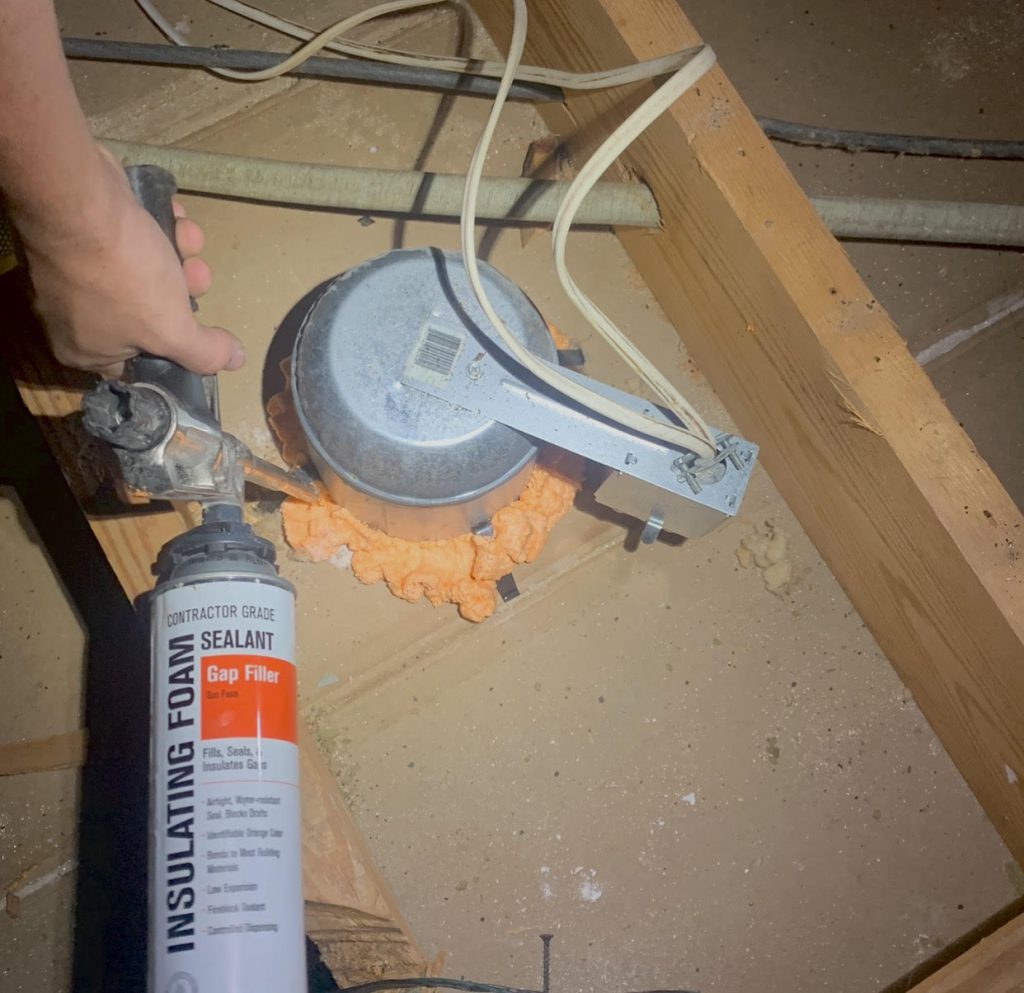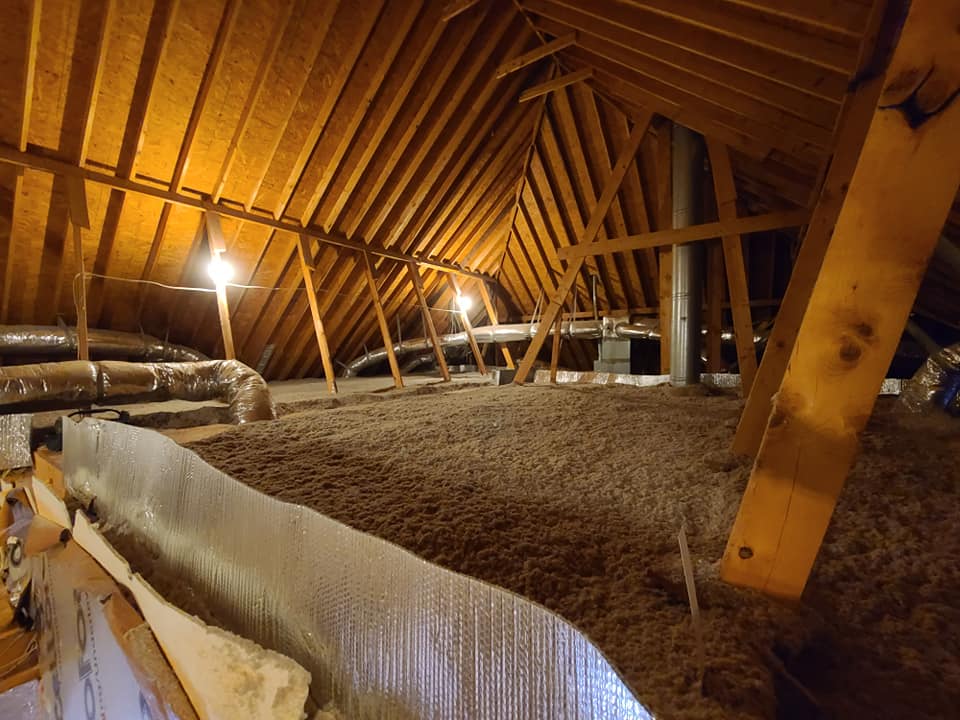Is airsealing my attic floor really that important? Is it so important that I should pay extra to have it done, before adding attic insulation?
Four in-house appointments per day, four days a week. That’s my life. And on Fridays, add two more appointments.
On average, about 15 to 18x a week, I’m having this conversation with homeowners, just like you. And not surprisingly, we all have similar questions… from house-to-house I go, answering amazingly similar questions.
And hearing very similar stories. It takes a bit of self control not to want to finish your sentences sometimes!
It’s now been 21 years of business, for Bird Family Insulation. And we’re still using the same phone number, same address, same bank, same company name, same company principles, and same insulation product:
STABILIZED CELLULOSE
And because of this, because of all these statements – YOU WIN!
You win because our commitment to airsealing attic floors is proven time-and-time again to benefit our clients.
It makes good sense right? Plug all those holes in your ceiling, between your living space and the attic?
And there are lots of these gaps, voids, holes, framed chases, seams, all over your attic floor.
- Recently we airsealed around a bathroom exhaust fan, and our Pestblock foam oozed out – into the shower. I got a text a few days later, “Bob, we don’t have any more wasps in our bathroom!”
- We have clients – every week – who purchase the Gold-Level, Attic Makeover simply because they want their attic floor thoroughly air sealed. Informed homeowners understand the importance of air sealing, especially those in older homes.
- Air sealing your attic floor is so beneficial for you as a homeowner, Georgia Power, Jackson EMC and other utilities actually pay rebates to you for having your attic floor air sealed.

How bad is it?
How much airsealing do we do in an average attic?
In our GOLD-LEVEL Makeover service, Beau & Chris will use – on average – 3 cans of Pestblock foam. One can of foam is 24 oz. How much sealing does a can of foam do?
You’re thinking, “I’ve got a few ceiling light fixtures, and one bath exhaust fan… there’s not that much to seal in an attic floor – right?”
One can of foam yields more than 2500 cubic inches (11 gallons) of expanded foam, the equivalent of several thousand feet of caulk. (I lifted that statement from a website called Conservation Technology, Building Sealants.)
According to the math, three cans of 24 oz foam tells me that we’re installing the equivalent of 33 gallons of expanded foam to seal an average attic floor, and isolate your dusty, unhealthy, hot/cold, damp, inferno-like attic from your pretty, clean, conditioned living spaces.
Is that important for you to know? I think so.
Are there trees around your home? If yes, you likely have bugs in your attic. Bugs in the attic travel through all those gaps and holes and easily travel behind your walls.
What do you think you’d see if your home’s interior walls were made with plexiglass (clear, see-through) walls? No sheetrock on the walls, but plexiglass, (clear plastic).
Ignore the fact that we’d be embarrassed with seeing each other – stay on track with me!
With your interior walls, you’d see no insulation. Just wires, framing studs, pipes, and maybe some hvac ducts…
And bugs, dust, and pieces of attic insulation, that come from (in part) your attic.
Our interior walls have horizontal 2×4’s that tie the vertical studs together. In the attic, these horizontal 2x4s are called top plates. Your sheetrock ceilings do not extend over top plates. Consequently, there are gaps, (two of them for every top plate) that look like railroad tracks, that you can stick your fingers through… that allow the attic environment to freely communicate with these hollow interior walls.
I (half-kiddingly) tell homeowners, “You could have a ¼ mile of gaps in your attic… look at all these interior walls!”

Choosing fiberglass? You Must Air Seal!
Here is my last thought on this subject of the importance of air sealing your attic floor:
If you plan to use fiberglass insulation in your attic, it’s twice as important to air seal the attic floor, as when you are installing cellulose insulation.
Here is why: loose fill fiberglass insulation is very porous. It allows for the (almost) free movement of airflow to occur through it. This is especially true with the older versions of fiberglass loose fill insulation.
The Power of Convection
Heat that moves through air currents is called convective heat. Convective heat gain in the summer, and convective heat loss in winter is a real problem. And it’s a terrible problem with fiberglass insulated attics that aren’t air sealed.
This isn’t a secret. Fiberglass insulation earns it’s R Value by trapping airflow. It’s full of zillions and zillions of microscopic air pockets.
I tell homeowners to think of cotton candy. Not to get them happy – but to imagine what their attic insulation looks like. Loose fill fiberglass insulation is low-density, (light-weight and porous).
Uncontrolled air infiltration moves very easily through loose fill fiberglass insulation, and if you are getting fiberglass attic insulation, this is why it is doubly important for you to insist that your attic floor be thoroughly air sealed.
However, cellulose insulation earns it’s R Value by blocking air flow.
This too is not a secret. Cellulose insulation is simply recycled paper products that have been treated so that it carries a Class 1 fire retardant certification.
Cellulose insulation is known as a high-density insulation.
Check this out: When we add as little as 3” or more of cellulose insulation, on top of your old, tired fiberglass insulation, our fresh cellulose insulation “bump-up service” has a similar effect as air sealing your attic floor!
It’s not 100% as effective as foam air sealing, but it’s a documented fact that adding a few inches of stabilized cellulose insulation on top of loose fill fiberglass insulation, reduces the uncontrolled air infiltration (convective heat gain or loss) occurring in that fiberglass insulation.
For proof, search the terms in the Oakridge National Laboratories database. It’s the world’s premier research facility, managed by the U.S. Department of Energy.

It’s Our Magic: Stabilized Cellulose
What is stabilized cellulose insulation? Stabilized simply means that we have added a small amount of water to your cellulose insulation, as we install it.
We attach a water hose to your house faucet, and attach the opposite end to our water sleeve. We regulate the water so that we’re blending 1 gallon of water for every 60 pounds of cellulose. That’s about 2 1/4 bales of cellulose insulation, per gallon of water.
It’s such a small amount, it’s not enough moisture for you to feel if you scooped up a handful of insulation while we’re installing.
However, this moisture does two very important functions:
- Makes the installation in the attic dust-free.
- Converts the wheat starch in the cell walls of your cellulose, to become a glue-like substance.
After we leave your attic, your attic ventilation takes over, and that small amount of moisture evaporates to the atmosphere through your ridge vents, gables vents, soffit vents, etc. In our 21 years of experience, we’ve learned that it only takes 2 or 3 sunny days for the moisture to evaporate.
This is so important because stabilizing your cellulose insulation is in large part why it dramatically slows uncontrolled, trespassing air infiltration!
Stabilized Cellulose vs Loose fill Fiberglass
These two attic insulation products, (stabilized cellulose and loose fill fiberglass) are as different in performance from one-another as an afghan blanket is different from a wool blanket.
In World War 2, can you imagine our military being given afghan blankets to protect themselves from freezing temperatures?
Because of the high convection rates, – if you are employing a contractor to install fiberglass insulation in your attic, please insist that your attic floor be thoroughly air sealed with expanding foam.
If you are installing or adding cellulose insulation to your attic, please make certain that your contractor is using a water sleeve and is stabilizing your cellulose insulation as he installs it in your attic.
In fact, if they don’t stabilize your cellulose insulation – please do yourself a big favor – and hire them to install fiberglass.
Installing cellulose insulation without a water sleeve, will leave you the biggest dusty mess in your attic. I’m begging you to refuse the installation.
It’s easy to know if they are stabilizing your cellulose. Just look for a water hose from the insulation rig to your home. (It’s rare that the rigs carry water in tanks onboard. We used to carry water in big RV tanks).
I’d rather see you paying for loose fill fiberglass rather than have dusty, un-stabilized cellulose insulation in your attic!
It’s your choice:

Here’s the metaphor…
Insulate your ceilings with an afghan blanket, or choose to use a wool blanket.
Air sealing the attic floor is clearly most important if you’re relying on fiberglass attic insulation to protect your home from the extreme temperatures in your attic.
Loose fill fiberglass insulation is porous like the afghan blanket.
Stabilized cellulose insulation protects like the wool blanket.
Secret Formula
Choosing cellulose attic insulation? For a stabilized application, be sure it’s installed with a water sleeve. Get that wheat starch to turn into glue and lock all those cellulose fibers together, into a monolithic blanket of thermal protection. This is the SECRET to how we dramatically cut down on the uncontrolled air infiltration trespassing back and forth from your home to your attic!
How’s this for a deal: Employ Bird Family Insulation to upgrade your attic insulation with our Bora Spray cellulose insulation, and my insulation will dramatically reduce your uncontrolled air infiltration for FREE!
Thanks for reading. To learn more about the wonderful benefits of cellulose attic insulation, check out our Youtube channel, Facebook page, and website. Simply search “Bird Family Insulation”.





